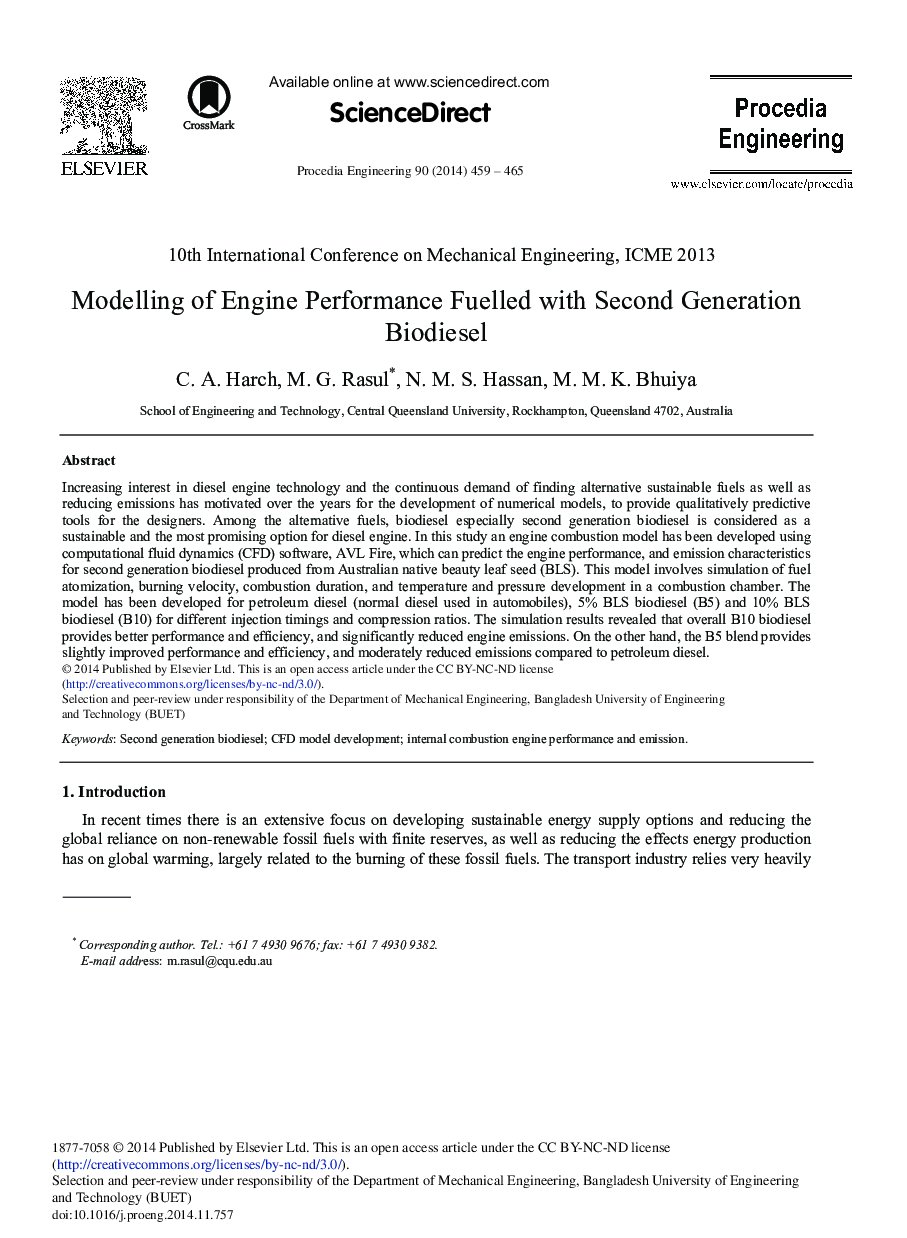| Article ID | Journal | Published Year | Pages | File Type |
|---|---|---|---|---|
| 857330 | Procedia Engineering | 2014 | 7 Pages |
Increasing interest in diesel engine technology and the continuous demand of finding alternative sustainable fuels as well as reducing emissions has motivated over the years for the development of numerical models, to provide qualitatively predictive tools for the designers. Among the alternative fuels, biodiesel especially second generation biodiesel is considered as a sustainable and the most promising option for diesel engine. In this study an engine combustion model has been developed using computational fluid dynamics (CFD) software, AVL Fire, which can predict the engine performance, and emission characteristics for second generation biodiesel produced from Australian native beauty leaf seed (BLS). This model involves simulation of fuel atomization, burning velocity, combustion duration, and temperature and pressure development in a combustion chamber. The model has been developed for petroleum diesel (normal diesel used in automobiles), 5% BLS biodiesel (B5) and 10% BLS biodiesel (B10) for different injection timings and compression ratios. The simulation results revealed that overall B10 biodiesel provides better performance and efficiency, and significantly reduced engine emissions. On the other hand, the B5 blend provides slightly improved performance and efficiency, and moderately reduced emissions compared to petroleum diesel.
